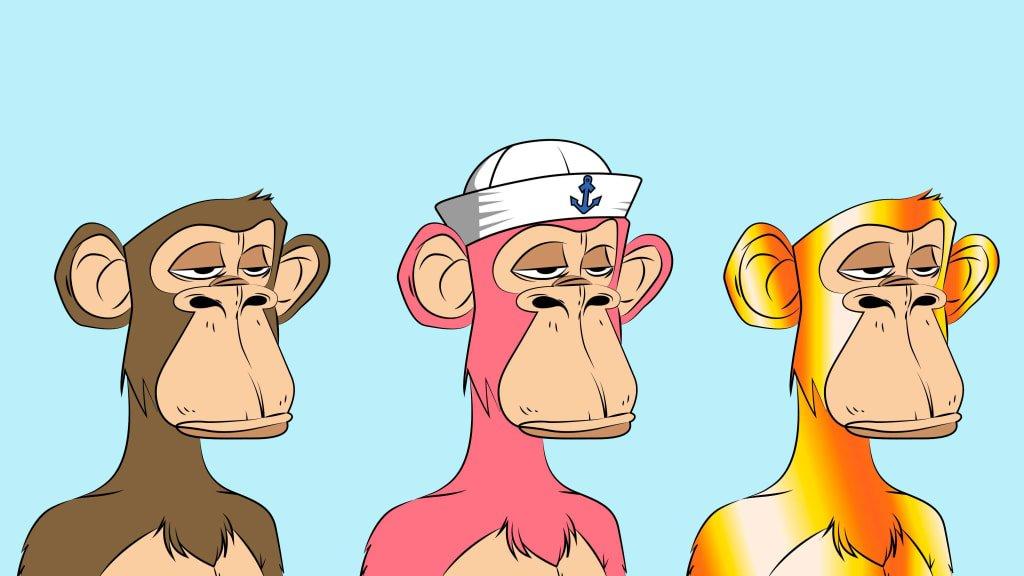Non-fungible tokens (NFTs) were one of the hottest trends in the crypto world in 2022. They allowed artists, creators, and collectors to tokenize and trade unique digital assets on the blockchain, such as art, music, videos, games, and even tweets. NFTs promised to revolutionize the creative economy by giving creators more control, ownership, and monetization of their work, as well as providing new opportunities for fans to support and interact with their favorite artists.
However, the NFT craze was short-lived. After reaching a peak of $17 billion in trading volume in January 2022, the NFT market collapsed by 97% in September 2022, according to data from Dune Analytics. The hype faded, the prices dropped, and the interest dwindled. What caused this dramatic decline, and what does it mean for the future of NFTs?
Why Did NFTs Get So Much Hype at First?
NFTs emerged as a novel and exciting use case of blockchain technology, which is the underlying infrastructure of cryptocurrencies like Bitcoin and Ethereum. Blockchain is a distributed ledger that records transactions in a secure, transparent, and immutable way. By using blockchain, NFTs can provide verifiable proof of authenticity, scarcity, and ownership of digital assets, which are otherwise easy to copy and distribute online.
NFTs also appealed to the human desire for collecting, owning, and displaying rare and valuable items. Some of the most popular NFT platforms were marketplaces for digital art and collectibles, such as OpenSea, SuperRare, Rarible, and Foundation. These platforms enabled artists to create and sell their work as NFTs, often using a smart contract that automatically pays them a royalty fee every time their NFT is resold on the secondary market. This created a new revenue stream for artists who otherwise struggle to make a living from their digital creations.
Moreover, NFTs attracted a lot of attention from celebrities, influencers, and mainstream media outlets. Some of the notable examples of NFT sales in 2022 include:
- The first tweet by Twitter founder Jack Dorsey sold for $2.9 million.
- A collage of 5,000 digital images by artist Beeple sold for $69 million at Christie’s auction house.
- A video clip of NBA star LeBron James dunking sold for $208,000 on NBA Top Shot.
- A rock-shaped JPEG image sold for $1.3 million on EtherRock.
- A pixelated image of a punk character sold for $7.6 million on CryptoPunks.
These examples show how NFTs created a new form of digital expression and social status. By owning an NFT, one could show off their taste, wealth, and support for a certain artist or community. NFTs also enabled new forms of fan engagement and interaction, such as voting rights, exclusive access, or personalized experiences.

Why Did NFTs Lose So Much Value and Popularity Lately?
However, the NFT boom also had its drawbacks. One of the main challenges was the environmental impact of NFTs. Most NFTs are built on the Ethereum blockchain, which uses a consensus mechanism called proof-of-work (PoW) that requires a lot of computing power and energy consumption to validate transactions. According to Digiconomist, Ethereum’s annual carbon footprint is equivalent to that of Ecuador.
This raised ethical concerns among some artists and collectors who were worried about contributing to climate change by creating or buying NFTs. Some platforms tried to address this issue by switching to more eco-friendly blockchains or offsetting their carbon emissions.
Another challenge was the quality and originality of NFTs. As the market became saturated with thousands of new NFT projects every day, it became harder to distinguish between genuine artistic expression and opportunistic cash grabs. Many NFTs were simply copied or stolen from other sources without permission or attribution. Some were even generated by algorithms or bots with minimal human input.
This led to a loss of trust and confidence among buyers who felt they were being scammed or overpaying for low-quality or fake NFTs. Some buyers also realized that owning an NFT did not necessarily mean owning the underlying asset or having exclusive rights to it. For example, an NFT of a tweet or a video does not prevent anyone else from viewing or sharing it online. In fact, the NFT itself is just a token that points to a URL where the actual asset is stored, which could be changed or deleted at any time.
Furthermore, the NFT market was affected by the broader crypto market conditions. The crypto sector experienced a significant downturn in 2022, as the global economy recovered from the Covid-19 pandemic and central banks tightened their monetary policies. This reduced the risk appetite and liquidity for speculative assets, such as cryptocurrencies and NFTs. As a result, many investors and traders exited the market, leading to lower demand and prices for NFTs.
Who Are the Celebrities Who Lost the Most from NFTs?
Some of the celebrities who jumped on the NFT bandwagon in 2022 may have regretted their decision later, as their NFT sales did not live up to their expectations or received backlash from their fans or critics. Some of the examples are:
- Lindsay Lohan sold an NFT of her face for $50,000 in February 2022, but it was resold for $15,000 in March 2022, losing 70% of its value.
- Paris Hilton sold an NFT of her cat for $17,000 in March 2022, but it was resold for $1,300 in September 2022, losing 92% of its value.
- Grimes sold a collection of NFTs for $6 million in March 2022, but some of them were resold for less than $1,000 in September 2022, losing over 99% of their value.
- Eminem sold an NFT of his beat for $100,000 in April 2022, but it was resold for $6,500 in September 2022, losing 93% of its value.
- Snoop Dogg sold an NFT of his dog for $25,000 in April 2022, but it was resold for $3,600 in September 2022, losing 86% of its value.
These examples show how volatile and unpredictable the NFT market can be, and how celebrity endorsement does not guarantee long-term success or value retention.

Will NFTs Be Able to Regain Their Former Popularity?
Despite the recent slump, some experts and enthusiasts believe that NFTs are not dead and that they have a bright future ahead. They argue that NFTs are still a nascent and evolving technology that has a lot of potential to transform various industries and sectors beyond art and entertainment. Some of the possible use cases and benefits of NFTs include:
- Gaming: NFTs can enable gamers to own and trade their in-game items, characters, and achievements across different platforms and games. They can also create new gaming experiences and economies based on user-generated content and rewards.
- Music: NFTs can empower musicians to monetize their work directly from their fans without intermediaries or fees. They can also offer new ways for fans to access exclusive content, merchandise, tickets, or experiences.
- Fashion: NFTs can create new opportunities for fashion designers and brands to showcase and sell their digital collections and accessories. They can also enable users to customize and wear their digital outfits across different virtual platforms and environments.
- Sports: NFTs can create new forms of fan engagement and interaction with their favorite athletes, teams, and leagues. They can also provide new sources of revenue and sponsorship for sports organizations and players.
- Education: NFTs can provide verifiable proof of credentials, achievements, and skills for learners and educators. They can also create new incentives and rewards for learning and teaching.
In conclusion, NFTs are a fascinating and innovative technology that has the potential to revolutionize various industries and sectors. However, they also face many challenges and uncertainties that have caused their market to collapse in 2022. To survive and thrive in the long term, NFT platforms and projects need to improve their technical and operational aspects, as well as their quality and originality. They also need to adopt effective SEO strategies to reach and engage their target audience and customers. NFTs are not dead, but they need to evolve and adapt to the changing market conditions and consumer preferences.





